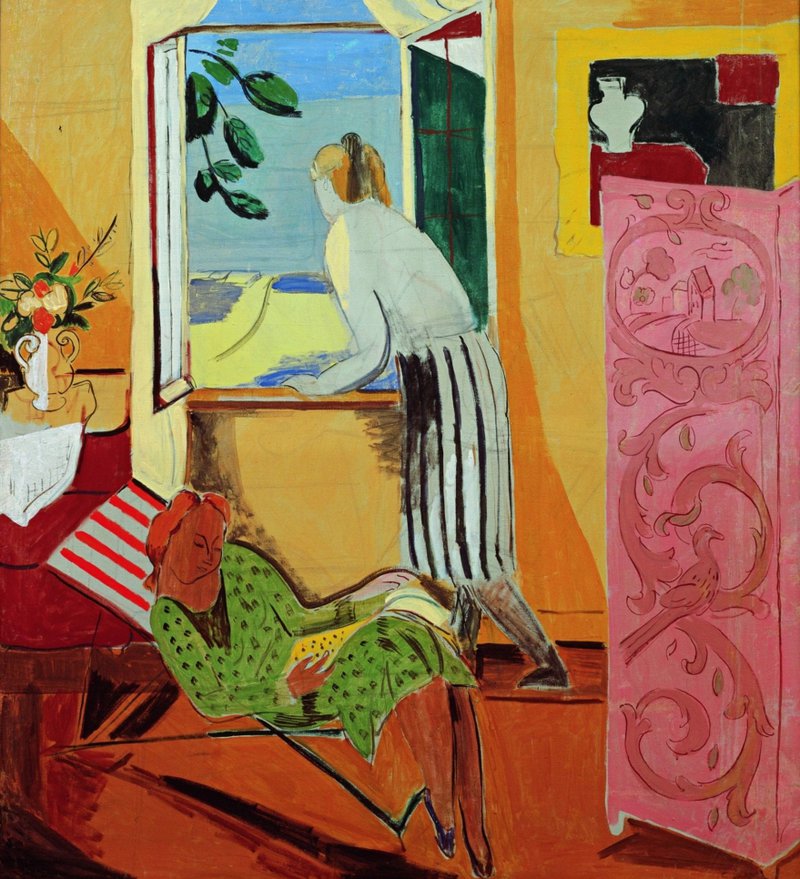The other Babel of the arts
until october 3, the exhibition explores the wider artistic nature of the town of Collioure FROM ENGLAND, SWITZERLAND, GERMANY, JAPAN, DOZENS OF ARTISTS CAME TO COLLIOURE
Collioure (Cotlliure in Catalan) on the Mediterranean coast of French Catalonia is known for its phallic belltower, for Charles Naudin’s exotic garden of palms and coconut trees, for the final resting place of the poet Antonio Machado, and yet above all it occupies a legendary place in the history of modern art because Henri Matisse arrived there in the spring of 1905. It was without doubt a big cultural moment, but after more than a hundred years, even in France the image of Collioure as the “cradle of Fauvism” is starting to get tired.
For many years after that 1905, artists from all over the world continued to flock to Collioure, most of them attracted, it is true, by the legendary imprint that Matisse had left, but also, as would happen at the same time in Ceret, Tossa, Arles and Cadaqués, because that rural Mediterranean area provided an oasis of light and peace in the increasingly dark years of interwar Europe.
Collioure, Babel of the Arts is the name of the exhibition that until October 3 explores the wider artistic nature of the town in the Museum of Modern Art, in Villa Pams. It is a festival in every sense: for the exuberance of colour on display and for the resurrection of long-forgotten names, such as the flamboyant artist Nina Hamnett, the “Queen of Bohemia”, who left memoirs that allow us to follow the everyday life of the artistic group: of Valentine Prax, who would marry the sculptor Óssip Zadkine; of Fernande Barrey, partner of Japanese-French artist Tsuguharu Foujita; of Hans Purrmann, Matisse’s most talented student, who arrived there in 1911.
The list goes on: the Polish painter Mela Muter, who lived in Collioure between 1921 and 1929 and who would later reappear in Tossa, the Costa Rican painter Manuel Cano de Castro, godfather of Zadkine, the architect Charles R. Mackintosh, who settled in Port-Vendres in 1924 and devoted himself to painting watercolours of the Marenda coast.
There are more: Leopold Survage, also beloved in Ceret, the Englishman Rudolph Ihlee, who painted as if he were a rare cross between the Duaner Rousseau and the enigmatic Balthus, Jean Peské, a French-Polish painter who was behind the initiative to set up the Museum of Modern Art with donations from painter friends, in the same year of 1934 when Rafael Benet, Enric Casanovas and company inaugurated the museum in Tossa with contributions from abroad.
Coming from England, Switzerland, Germany, Japan or Catalonia, dozens of artists converged on Collioure, sometimes for weeks and sometimes for years, turning the town into a laboratory of light in the face of growing fascism. It is an optimism the town shared with other colonies of contemporary artists, such as those of Ceret or Tossa. In fact, many moved from one destination to another, living a sort of shared communal life and adopting the customs, speech, and the frugal and yet exuberant food of the locals. Apart from many landscapes, the exhibition features still lifes crowded with aubergines, peppers and lemons alongside fish that seem to flap with life on the table.
Curator Claire Muchir has organised the exhibition by nationality, reflecting how the artists ended up relating most to those whose language they understood. Among them is the Catalan Virgili Batlle Vallmajó, who not only appears in the Collioure exhibition, but also in the Musée Terrus in nearby Elne, which has a retrospective of the artist from Olot until October 12.
feature art

